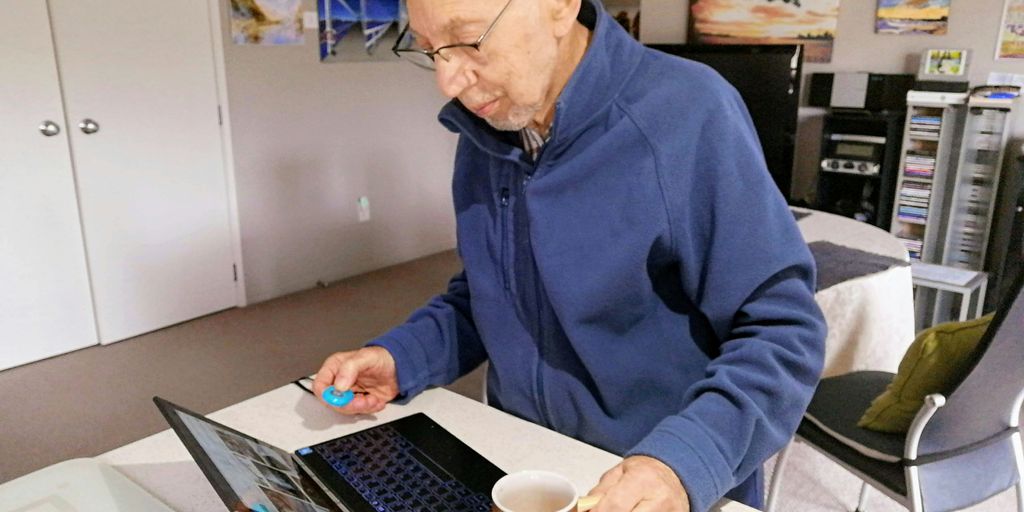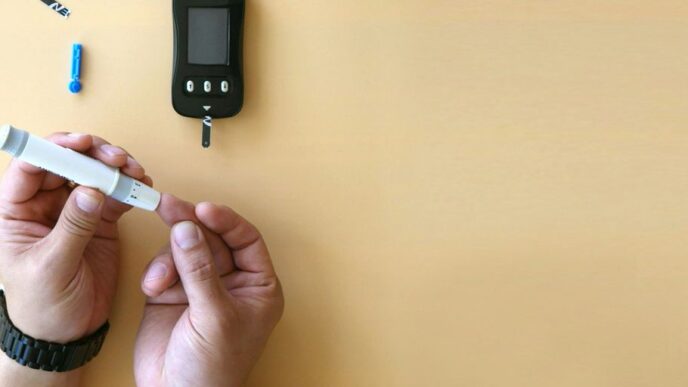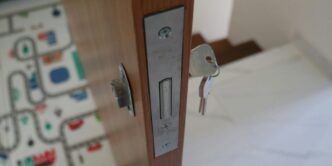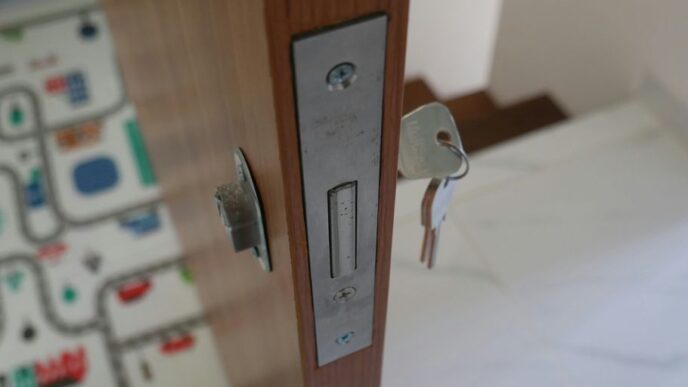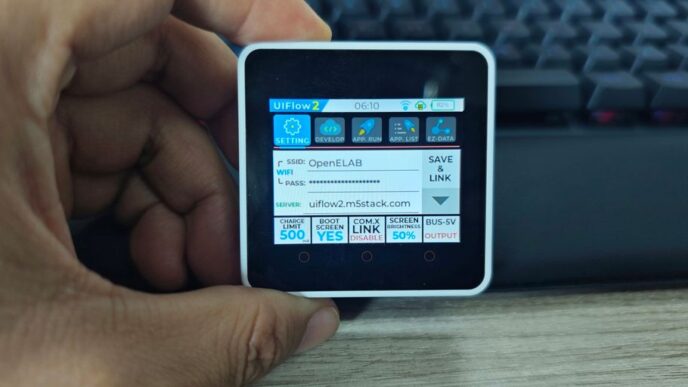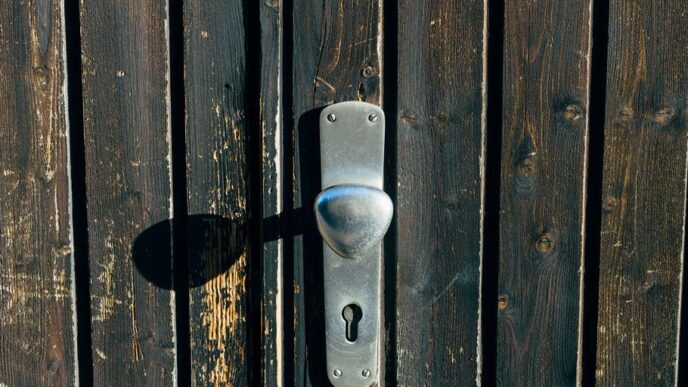Ever wondered how to get your Google Home devices to play nice with your computer? It’s not always super obvious, especially since there isn’t a direct “google home login pc” button. But don’t worry, even though Google Home is mostly a mobile thing, there are still ways to get some of its cool features working on your PC. This guide will walk you through everything, from setting things up to troubleshooting common hiccups, so you can get your smart home gadgets and computer chatting with each other.
Key Takeaways
- You can’t directly log into Google Home on a PC, but you can use casting and web interfaces.
- The Google Home app on your phone is still key for setting up and managing your devices.
- Chrome browser is your friend for casting content from your PC to Google Home devices.
- Keeping your Wi-Fi strong and your apps updated helps avoid most problems.
- You can use Google Assistant on your PC and even explore third-party tools for more control.
Understanding Google Home and PC Compatibility

The Role of the Google Home App
The Google Home app is your central hub for managing all things Google Home. Think of it as mission control. It’s primarily designed for mobile devices (Android and iOS), acting as the go-to interface for initial setup, device management, and routine creation. You use it to link your Google account, connect devices to your Wi-Fi, and configure settings. It’s pretty intuitive, guiding you through each step. The app also offers diagnostic features to help you identify and resolve issues quickly. You can check device information, Wi-Fi connection status, firmware version, and audio settings. If you’re still having trouble, the app offers direct access to Google support.
Limitations of Direct PC Login
Here’s the thing: there isn’t a direct Google Home login for PC in the way you might expect. You can’t just open a program on your computer and see all your devices neatly laid out. The Google Home app is built for mobile. This limitation stems from the way Google designed the system, focusing on mobile-first interaction. While this might seem inconvenient, there are workarounds, which we’ll get into. For example, to start using a new Chromecast, visit the Chromecast setup page to download the Google Home Android or Apple app that’s compatible with your mobile device, laptop, or computer.
Bridging the Gap with Casting
So, how do you actually get your PC to play nice with your Google Home setup? The answer is casting. Casting lets you send content from your PC to your Google Home devices, like a Chromecast-enabled TV or a Google Nest speaker. You can cast from the Chrome browser, specific apps (like YouTube or Spotify), or even your entire desktop. It’s not a direct login, but it allows you to control and interact with your Google Home devices from your PC. Make sure that your Chromecast and your smartphone are connected to the same Wi-Fi connection. If you want to connect Google Home to WiFi, you can do so through the app.
Setting Up Your Google Home Devices for PC Access
Okay, so you want to get your Google Home devices playing nicely with your PC? It’s not as straightforward as logging into a website, but it’s totally doable. Here’s how to get everything set up so you can control your smart home from your computer.
Initial Device Setup with the Google Home App
First things first, you absolutely need the Google Home app on your phone or tablet. This app is the control center for all your Google Home devices. Think of it as mission control. You can’t really skip this step. Download it from the Google Playstore or Apple App Store, and make sure you’re logged in with your Google account. Once you’ve downloaded the app, here’s what you need to do:
- Plug in your Google Home device and wait for it to power on. Usually, there’s a light that indicates it’s ready to go.
- Open the Google Home app and tap the "+" button to add a new device. The app will then search for nearby devices.
- Follow the on-screen instructions. The app will walk you through connecting to your Wi-Fi and linking your Google account.
Connecting to Your Wi-Fi Network
This is a big one. Your Google Home device and your PC need to be on the same Wi-Fi network to communicate. It sounds obvious, but it’s a common tripping point. Make sure both devices are connected to the same band (2.4GHz or 5GHz). You can check this on your phone in the Wi-Fi settings. On your PC, just click the Wi-Fi icon in the corner of your screen. If you’re having trouble, try these steps:
- Double-check your Wi-Fi password. It’s easy to mistype it.
- Restart your router. Sometimes, a simple reboot fixes everything.
- Make sure your Google Home device is within range of your router.
Linking Your Google Account
This is how Google knows it’s you controlling things. When you set up your Google Home device through the app, it’ll prompt you to link your Google account. This is the same account you use for Gmail, YouTube, and everything else Google. If you skip this step, you won’t be able to do much. If you’re not sure if you’ve linked your account, you can check in the Google Home app settings. Go to settings, then linked accounts, and make sure your Google account is there. If not, add it! It’s pretty straightforward. This is also important for Google Chromecast setup with Google TV.
Accessing Google Home Features Through Your PC
Utilizing Google Chrome for Casting
Okay, so you want to get your Google Home stuff showing up on your PC? The easiest way is through Google Chrome. Chrome has built-in casting capabilities that let you send content from your browser to your Google Home devices. It’s pretty straightforward, and you don’t need any fancy software. Just make sure your PC and Google Home are on the same Wi-Fi network.
Here’s a quick rundown:
- Open Chrome.
- Find the content you want to cast (a YouTube video, a website, whatever).
- Click the three dots in the top right corner of Chrome.
- Select "Cast…"
- Choose your Google Home device from the list.
Boom! Your content should now be playing on your chosen device. You can even cast your entire desktop if you want to show off a presentation or something. If you’re having trouble with Chromecast setup, double-check that both devices are on the same Wi-Fi band (2.4GHz or 5GHz).
Casting Specific Applications to Your Device
Some apps, like Netflix and Spotify, have a built-in cast button. This makes it super easy to send stuff directly from the app to your Google Home. Look for the cast icon (it looks like a little screen with a Wi-Fi symbol) within the app. Tap it, and your Google Home devices should pop up. Select the one you want, and you’re good to go. This is way more convenient than casting your whole screen, especially if you’re just trying to watch a movie or listen to music. It also means you can still use your PC for other stuff while the content is playing on your Google Home. If you are having issues, you can use the Google Home app to troubleshoot.
Managing Devices via Web Interface
While you can’t directly "log in" to Google Home on your PC like you would with a website, you can manage some aspects of your devices through the Google Home app (on your phone or tablet) and by casting. There isn’t a full-fledged web interface that gives you all the same controls as the app, but casting lets you control media playback and volume. For more in-depth settings, you’ll still need to use the app. Think of it like this:
| Feature | Web Interface (Casting) | Google Home App |
|---|---|---|
| Media Control | Yes | Yes |
| Volume Control | Yes | Yes |
| Device Settings | No | Yes |
| Routine Creation | No | Yes |
So, while you can’t do everything from your PC, casting is a handy way to get some basic control over your Google Home devices. You can also use the Google Cast extensions to help with the process.
Troubleshooting Common Google Home Login PC Issues
Resolving Connectivity Problems
Okay, so you’re trying to get your Google Home working on your PC, and it’s just not happening? Super frustrating, I get it. First things first, let’s tackle the most common culprit: connectivity. Make sure your PC and your Google Home device are both on the same Wi-Fi network. Sounds simple, but you’d be surprised how often this is the issue.
Here’s a quick checklist:
- Double-check the Wi-Fi network on both devices. Are they exactly the same? Even a slight difference (like one being on the 2.4 GHz band and the other on 5 GHz) can cause problems. You can check internet speed to make sure your connection is stable.
- Restart your router. Seriously, it’s the oldest trick in the book, but it often works wonders. Unplug it, wait 30 seconds, and plug it back in.
- Check for interference. Microwaves, Bluetooth devices, and even some older cordless phones can mess with your Wi-Fi signal. Try moving your Google Home device and your PC away from these potential sources of interference.
Addressing App Setup Glitches
Sometimes, the problem isn’t the connection itself, but the Google Home app acting up. If you’re having trouble with the app, here’s what I’d suggest:
- Force quit the app and reopen it. This is the digital equivalent of a deep breath.
- Clear the app’s cache. This can get rid of any corrupted data that might be causing issues. The process varies depending on your operating system, but a quick Google search for "clear app cache [your operating system]" should point you in the right direction.
- Uninstall and reinstall the app. It’s a bit of a pain, but it’s often the most effective way to fix persistent app problems. Make sure you remember your login credentials before you do this!
Checking Device Power and Connections
Don’t laugh, but sometimes the simplest solutions are the ones we overlook. Make sure your Google Home device is actually powered on and properly connected. I know, I know, it sounds obvious, but it’s worth checking. Here’s what to look for:
- Is the device plugged in securely? Give the power cord a wiggle to make sure it’s not loose.
- Is the power outlet working? Try plugging something else into the outlet to see if it’s providing power.
- Look for any indicator lights on the device. If there are no lights, that’s a pretty good sign that something’s wrong with the power supply.
If you’ve tried all of these steps and you’re still having trouble, it might be time to consult Google’s support resources. They have a wealth of information online, and you can even chat with a support representative if you need more personalized help.
Optimizing Your Google Home Experience on PC
Ensuring Consistent Wi-Fi Connectivity
Wi-Fi is the backbone of your Google Home setup, especially when using it with a PC. A stable connection is key for smooth casting and control. I’ve found that sometimes my Google Home devices act up simply because the Wi-Fi is spotty. Here’s what I do:
- Regularly check your router’s placement. Is it obstructed? Walls and metal can mess with the signal.
- Consider a Wi-Fi extender if you have a large home. It’s a simple way to boost coverage.
- Run a speed test occasionally to make sure you’re getting the bandwidth you’re paying for. Slow speeds can cause buffering and disconnects.
Updating Google Home App and Chrome Browser
Outdated software can cause all sorts of problems. I make it a habit to update both the Google Home app and my Chrome browser regularly. New versions often include bug fixes and performance improvements. Plus, they might add new features that make using Google Home on your PC even better. I usually check for updates at least once a week. It’s a small thing that can make a big difference. You can also check out the troubleshooting guide for more help.
Customizing Device Settings for PC Use
Did you know you can tweak your Google Home device settings to better suit PC use? I didn’t at first! For example, you can adjust the default casting resolution in Chrome to match your monitor’s resolution. This can improve the picture quality when you’re streaming videos. Also, explore the accessibility settings. You might find options that make it easier to control your devices from your PC. Here are some settings I often adjust:
- Display Settings: Adjust brightness and color for optimal viewing on your PC monitor.
- Audio Settings: Fine-tune the sound output to match your PC’s speakers or headphones.
- Notification Settings: Customize which notifications you receive on your PC to avoid distractions.
Advanced Google Home PC Integration Techniques
Exploring Third-Party Integrations
Google Home’s capabilities can be seriously expanded by using third-party integrations. There are tons of apps and services that play nice with Google Home, letting you do things you couldn’t otherwise. Think about controlling smart devices from different brands all in one place. For example, you can link your Philips Hue lights, your Samsung SmartThings hub, and even your iRobot vacuum to Google Home. This means you can control everything using voice commands or through the Google Home app, even from your PC. It’s all about making your smart home more connected and convenient.
Using Google Assistant on Your PC
Did you know you can use Google Assistant directly on your PC? It’s not just for your Google Home devices anymore. By installing the Google Assistant app or using a Chrome extension, you can access many of the same features you’d get on a smart speaker. This includes setting reminders, playing music, asking questions, and controlling your smart home devices. It’s super handy when you’re working on your computer and don’t want to reach for your phone or shout across the room to your Google Home. Plus, it integrates nicely with other Google services you might be using on your PC, like Calendar and Gmail. You can even troubleshoot your Google Nest devices using the Google Home app.
Setting Up Routines for PC Control
Routines are a game-changer for automating tasks with Google Home, and you can trigger them from your PC too. Instead of manually controlling each device, you can create routines that perform multiple actions with a single command. For example, you could set up a "Work Time" routine that turns on your desk lamp, starts playing focus music, and silences notifications on your phone. Or, a "Movie Night" routine that dims the lights, turns on the TV, and sets the thermostat to a cozy temperature. The possibilities are endless, and setting these up to work seamlessly with your PC makes your life way easier. Here’s a few ideas:
- Morning Routine: Starts with a news briefing and adjusts smart lights.
- Evening Routine: Locks doors and turns off all lights.
- Custom Routine: Any sequence of actions tailored to your needs.
Wrapping Things Up
So, there you have it. Getting your Google Home stuff to work on your computer isn’t too bad once you know the steps. It’s mostly about using the right apps and making sure everything’s connected properly. If you hit a snag, don’t sweat it. Just go back through the steps, check your connections, and you’ll probably find what’s going on. It’s pretty cool how much you can do with these devices, even from your PC, so enjoy all the smart home features!
Frequently Asked Questions
Can I log into my Google Home account directly from my PC?
While you can’t directly log into your Google Home account on a PC like you would a website, you can use the Google Home app on your smartphone or tablet to manage your devices. Then, you can cast content from your PC to your Google Home devices using the Google Chrome browser or other compatible apps.
Do I need the Google Home app to use my Google Home devices with my PC?
The Google Home app is the main way to set up and control your Google Home devices. You’ll need it on a phone or tablet to get your devices ready. Once they’re set up, you can use your PC to cast things to them or manage some settings through Google’s web interfaces.
Can I cast my computer screen to my Google Home device?
Yes, you can! Google Chrome has a built-in
My Google Home device isn’t connecting to my PC. What should I do?
If your Google Home device isn’t connecting, first check your Wi-Fi. Make sure both your PC and your Google Home device are on the same Wi-Fi network. Also, try restarting your Wi-Fi router and your Google Home device. Sometimes, a simple restart fixes many problems.
How can I make my Google Home experience better when using it with my PC?
To make sure your Google Home experience on your PC is smooth, always keep your Google Home app updated on your phone or tablet. Also, regularly update your Google Chrome browser. A strong and stable Wi-Fi connection is also super important for good performance.
Can I use Google Assistant on my PC?
Yes, you can! You can use Google Assistant directly on your PC through various methods, like the Google Assistant app for Windows or by accessing it through your web browser. This lets you give commands and get information just like you would with your Google Home speaker.


